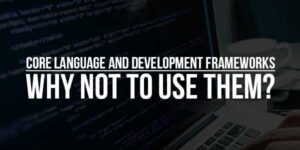
Data analysis is the most crucial part, and it summarizes the data gathered. It includes interpreting data collected by analysis and reasoning to determine patterns, relationships, or trends.
Table of Contents
What Is Data Analysis?
Data analysis is a process to inspect, clean, process, and model data to discover useful information, inform conclusions and promote decisions. The data analysis has several facets and approaches involving various names and is used in business, science, and social science. Data analysis in today’s business world plays a role in decision-making to make companies more scientific and efficient.
Data analysis is an internal organization function carried out by data analysts that shows numbers and figures to management. It calls for a more thorough approach to recording, analyzing, and dissecting data, and presenting results in an accessible format.
As the workplace is technology-driven and rapid, data analysis and the skills acquired from Data Analysis courses play an essential role in the business sector.
Definition Of Data Analysis In Research:
Data analysis in research is a process for researchers to reduce data to one story and interpret it to obtain insight. The method of data analysis contributes to reducing a large number of data into smaller, meaningful fragments.
During the data analysis process, three essential things take place—the first organization of data. Together overview and categorization help to become the second known data reduction method. It helps to find patterns and key points in data to identify and connect quickly. The last and third way is to analyze the data – researchers do so either in the top-down or bottom-up model.
Why Analyze Data In Research?
Researchers rely heavily on data because they can tell a story or solve problems. Well! Even without a problem, it is possible to explore data – we call it ‘Data Mining,’ which often reveals interesting patterns worth exploring data.
Irrelevant to the data type, researchers are exploring and guiding their mission and audience vision in finding the models to shape their story. One of the key expectations of researchers in data analysis is to remain open and impartial to unforeseen patterns, expressions and results.
Data Analysis In Research
Each type of data has unique features that effectively describe problems in a particular topic. These data can be of various kinds.
- Qualitative data – Data that can be observed and recorded and not numerical are referred to as qualitative data. It enables respondents to express their views contextual fully. It provides dynamic approaches; it offers a valuable conversation about a specific topic. It is mainly used for managing marketing and consumer research if, for example, a new brand accepts or does not accept consumers. The researcher uses a qualitative approach to collect information and feedback about consumer experiences to know the answer.
- Quantitative data – The data expressed in numbers, figures, and tables are called quantitative data. Examples of quantitative data include height, class interval, wall length, number of peoples, and mark percentage. Quantitative data is collected from questionnaires and surveyors by using computer skills to manipulate pre-existing statistics.
- Categorical data – These data sets shown in groups fall within the fundamental structure of the data. It can only belong to one group. Several assignment writers prefer to calculate categorical data sets for a chi-square test.

How Is Data Analysis Performed?
The data analysis is an important topic and may contain some of these steps:
- Defining goals: Begin with a concept of some clearly defined goals. The goals should be crystal clear to get the best results from the data.
- Posing questions: Figure out the data for questions you want. For example, are red sports cars more often involved than others in accidents? Figure out which tools for analyzing your questions will be the best result.
- Data collection: You can gather data from various sources such as DMV or accident reports, insurers, and hospitalization information in this example.
- Scrubbing data: You can collect raw data in various formats with many junk values and clutter. The data is cleaned and converted to allow for importing from data analysis tools. It’s a significant step, but this is not a glittering step.
- Data analysis: In the data analysis tools, import these new clean data. These tools allow the data to be explored, patterns to be found, and questions to be answered. That’s the reward, where you can see results!
- Drawing and predicting conclusions: Conclude your data. These conclusions can be summarised in a visual report or in both to achieve the correct results.
Considerations In Research Data Analysis
Researchers need to be trained to demonstrate a high standard of research practice to analyze the data. Ideally, more than a basic understanding of why one statistical method over another is chosen should be available to researchers to achieve better data insight.
Research and data analysis procedures usually differ according to scientific discipline. Therefore, receiving statistical advice at the start of the analysis helps design a survey questionnaire, select data collection methods, and select samples.
The main objective of data research and analysis is to provide definitive insights. Any mistake in collecting data, selecting an analysis method, or selecting a sample of audiences is a biased inference.
Irrespective of the sophistication used in research data and analysis, objective results are sufficient to rectify them. Whether the design is faulty or the intentions are not clear, it does not matter, but lack of clarity may trick readers, so it does not matter.
Precise and reliable data are the motive behind data analysis in research. Avoid statistical errors and find a way to address daily challenges such as outliers, missing data, data alteration and extraction, and graphical display development as much as possible.
Final Words
Data analysis is used with statistical tools to evaluate data to detect helpful information. Data mining, text analysis, business intelligence, combining data sets, and data visualization are a wide range of methodologies.
Data collection is a crucial factor in data analysis from third-party sources. A simple search in the search engine can lead to various web pages where reliable data can be obtained. Research, however, is not credible without collecting and compiling data from a diverse source.


















Be the first to write a comment.